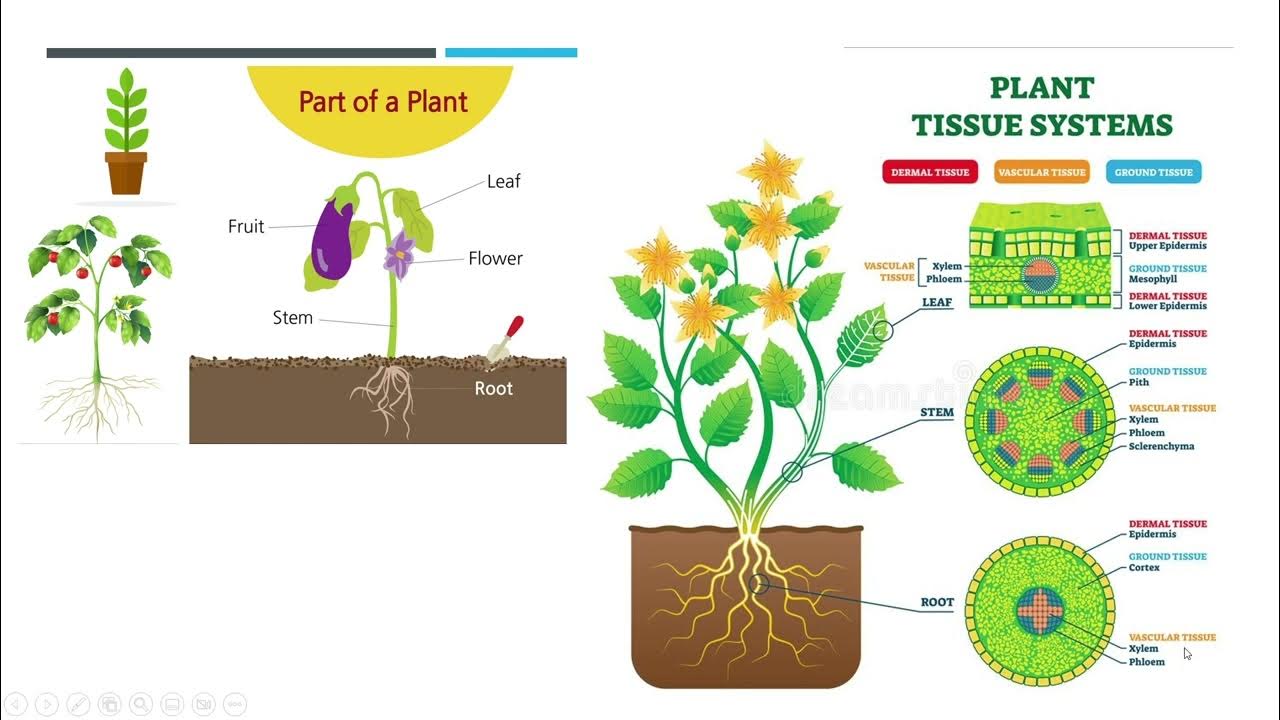BIOLOGI Kelas 11 - Jaringan Hewan (Part 1) | GIA Academy
Summary
TLDRThis educational video script delves into the various tissues found in animals, focusing on epithelial and connective tissues. It explains the structure and function of epithelial tissues, including their role in absorption, protection, secretion, and sensory reception. The script also covers different types of connective tissues, such as loose connective tissue, dense regular connective tissue, and special connective tissues like cartilage and bone. It highlights the functions of these tissues in energy storage, cushioning, and blood formation. The video aims to enhance understanding of animal tissues, with examples and a quiz to reinforce learning.
Takeaways
- 😀 The video discusses various types of tissues found in animals, focusing on epithelial, connective, muscle, and nervous tissues.
- 🔍 Epithelial tissue is the covering tissue of the body, composed of tightly packed cells with little intercellular space, and plays roles in absorption, transportation, protection, secretion, and sensory reception.
- 🌟 Epithelial tissue is categorized into simple and complex types, with simple epithelium consisting of a single layer of cells, while complex epithelium has multiple layers.
- 🏡 Based on location, epithelial tissue is divided into epidermis, mesothelium, and endothelium, each serving different protective and functional roles.
- 💧 Epithelial tissues perform various functions such as diffusion, filtration, secretion, and protection in locations like the alveoli of the lungs, the lining of blood vessels, and the pleura.
- 🌿 Epithelial glandular tissue is involved in the production and storage of chemical substances, with exocrine glands secreting externally and endocrine glands releasing hormones directly into the bloodstream.
- 💪 Connective tissue is composed of cells and an extracellular matrix, serving to connect, support, and provide structural integrity to different parts of the body.
- 🦴 Connective tissue includes various types such as loose connective tissue, dense connective tissue, cartilage, bone, blood, and lymph, each with specific functions like energy storage, shock absorption, and blood formation.
- 🩸 Blood is a type of connective tissue that consists of blood cells and plasma, responsible for transporting oxygen, carbon dioxide, nutrients, and hormones throughout the body.
- 🧠 Nervous tissue, although not extensively detailed in the script, is mentioned as one of the main tissue types in animals, responsible for transmitting nerve impulses and coordinating body functions.
Q & A
What are the four main types of tissues found in animals?
-The four main types of tissues in animals are epithelial tissue, connective tissue, muscle tissue, and nervous tissue.
What is the primary function of epithelial tissue?
-Epithelial tissue primarily functions as a protective barrier, aids in absorption, secretion, and acts as a selective barrier for the exchange of substances between different body compartments.
How does the structure of epithelial tissue contribute to its regenerative capabilities?
-Epithelial tissue is composed of tightly packed cells with little to no intercellular space, which allows for a high degree of regeneration due to the close proximity of cells to each other.
What are the different types of epithelial tissues based on their location?
-Epithelial tissues are categorized based on location into epidermis, which borders the external environment; mesothelium, which lines body cavities; and endotelium, which lines internal organs.
What is the role of goblet cells in epithelial tissue?
-Goblet cells, found among the cells of epithelial tissue, function to produce mucus, aiding in protection, secretion, and absorption processes, particularly in the lining of the gastrointestinal tract.
How do exocrine and endocrine glands differ in their secretion methods?
-Exocrine glands secrete their products onto the body surface through ducts, while endocrine glands secrete hormones directly into the bloodstream or lymphatic system without the use of ducts.
What are the main components of connective tissue?
-Connective tissue is primarily composed of the extracellular matrix, which includes collagen and elastic fibers, and cells such as fibroblasts, macrophages, and adipocytes.
How does the structure of dense regular connective tissue differ from that of dense irregular connective tissue?
-Dense regular connective tissue has collagen fibers arranged in a specific direction, like in tendons, while dense irregular connective tissue has fibers arranged in various directions, such as in the dermis of the skin.
What is the function of loose connective tissue in the body?
-Loose connective tissue serves as a supportive and filling structure between organs, providing shape and nourishment to the tissues it surrounds.
What are the characteristics of cartilage and bone as special types of connective tissue?
-Cartilage is a flexible connective tissue with a matrix that can be elastic or fibrous, while bone is a rigid connective tissue composed of osteocytes within a mineralized matrix, providing structural support and protection.
What is the role of blood and lymph in the body's connective tissue system?
-Blood and lymph are considered connective tissues because they originate from mesenchyme. Blood, composed of blood cells and plasma, transports nutrients, oxygen, and hormones, while lymph, containing lymphocytes and granulocytes, returns interstitial fluid to the bloodstream and aids in immune function.
Outlines

Esta sección está disponible solo para usuarios con suscripción. Por favor, mejora tu plan para acceder a esta parte.
Mejorar ahoraMindmap

Esta sección está disponible solo para usuarios con suscripción. Por favor, mejora tu plan para acceder a esta parte.
Mejorar ahoraKeywords

Esta sección está disponible solo para usuarios con suscripción. Por favor, mejora tu plan para acceder a esta parte.
Mejorar ahoraHighlights

Esta sección está disponible solo para usuarios con suscripción. Por favor, mejora tu plan para acceder a esta parte.
Mejorar ahoraTranscripts

Esta sección está disponible solo para usuarios con suscripción. Por favor, mejora tu plan para acceder a esta parte.
Mejorar ahora5.0 / 5 (0 votes)






